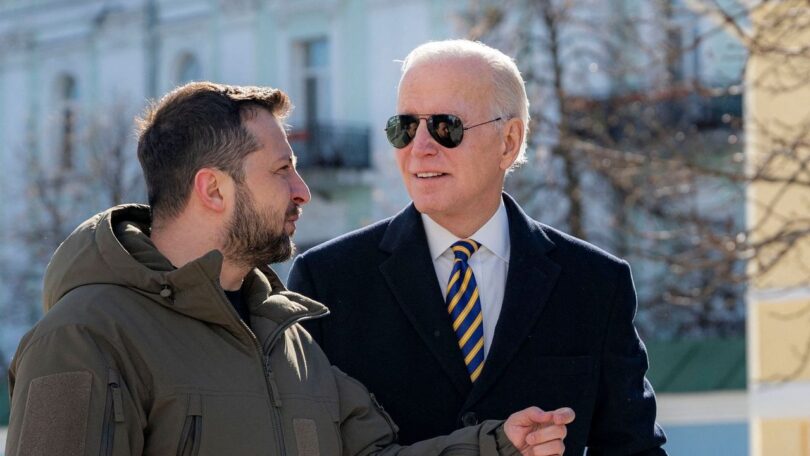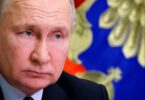Richard Kemp
Time is not on the side of the Ukrainian armed forces in their long-running counter-offensive. They are battling not just against the strongest Russian defences but also the clocks of eastern European weather and US electoral politics.
Despite frustration at the slow pace of Ukraine’s advance, no one can question the need for extensive “battlefield shaping”, in military language, before attempting to break through the heavily defended Surovikin line and striking deep into Russian controlled territory. After all, before attacking into Iraq in 1991, the US-led coalition conducted a shaping air campaign that lasted almost as long as the Ukrainian advance has so far. Denied any comparable ability to soften up enemy defences with airpower, Ukraine’s preparation has had to rely on reconnaissance in force, missiles and artillery to whittle down front line positions and hit headquarters and supply lines while probing for weaknesses to exploit with ground forces. Now it looks like the Ukrainians have identified the most favourable axis of attack, from south of Zaporizhia towards Melitopol, and they seem to be committing elements of the Nato-equipped and trained 10th Operational Corps. Of the various options, that would be the most productive, potentially enabling Kyiv to break Russia’s land corridor from the east, isolating Crimea and cutting off forces in the west of the country.
But if and when Ukrainian troops succeed in smashing through the first line of defences – which they have not yet achieved – the road ahead will be very long and very bloody. They face mile after mile of obstacles including tank traps, barbed wire and minefields, plus dug-in infantry, pillboxes, machine guns, tanks, artillery fire, combat planes, attack helicopters, drones and missiles. War is more unpredictable than any other human activity, and no one, not even those directing events in Kyiv or Moscow, can possibly know whether or to what extent Ukraine will succeed. But after spending two precious months trying to shape the battlefield, as the autumn mud approaches, there remains only a matter of weeks before any armoured advance will become bogged down. That means major offensive operations will have to pause at least until the onset of the winter freeze in November and possibly even until next spring.
This is well understood and will be built in to battle plans by both Ukraine and Russia. But there is an even bigger problem to contend with than the capricious General Winter, which can work for either side, and that is the American general election, which will almost certainly work against Kyiv. Biden will be wishing for this war to end before the election season gets under way in earnest, because he knows that, among much of the US population, war is something to campaign against rather than campaign for. Continued fighting is more likely to lose votes than to win them, especially if things go wrong for Ukraine, for which Biden will be blamed at the ballot box.
There is, of course, another American anxiety; one that is perhaps greater than the fear of drawn-out battle. That is a level of Ukrainian victory that could lead to collapse in the Kremlin and possible fragmentation and chaos across the country with potentially catastrophic geostrategic consequences and untold global economic harm. This immediate vision of doom may or may not be right – but it endures in the back of the minds of White House officials. It also goes some way to explaining why the US has been generous only up to a point on military aid for Ukraine. Far more could and should have been provided and much more quickly. Instead the administration has supplied just enough to achieve a certain level of success but not sufficient to inflict outright defeat on Putin’s regime.
F16s and long range missiles are a case in point. Both would have given Kyiv a much greater strategic edge in its fight back, despite the extraordinary claims by US national security advisers that neither is critical to Ukraine’s war effort but may be of use for its long term defence. This is the same thinking as Biden’s recent opposition to fast-tracking Ukraine for Nato membership: such things are to be used as bargaining chips for the peace talks that we can expect to see pushed forward from Washington by the autumn. The ground has apparently been laid over many months, with some suspecting secret channels between the head of the CIA and his opposite number in Moscow.
US electoral politics may mean that peace talks are inevitable, but they are nevertheless ill-judged. Even if Ukraine does manage to re-take significant territories before any ceasefire, negotiations can only hand a form of victory to Russia, which will neither pull back from the ground it has taken nor accept any Nato security conditions.
As we saw previously when Moscow occupied substantial areas of Georgian territory in 2008 and Ukraine in 2014, the Kremlin’s imperial ambitions will not be over when the fighting has ended. Unless it is vanquished on the battlefield, it will only be a matter of time before Russia resumes its aggression. But perhaps the current US administration can only see as far as November 2024, when Americans go to the polls.
The Telegraph







